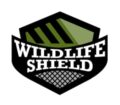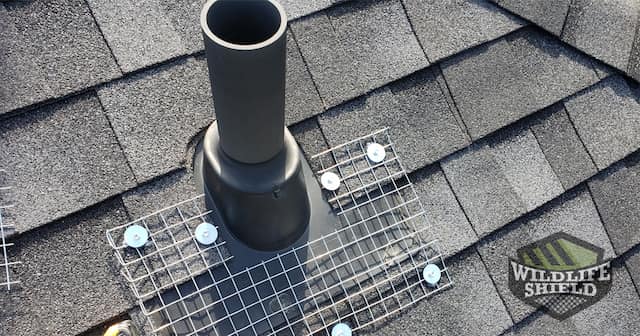The following case study details a raccoon removal and wildlife-proofing job in Whitby, Ontario. A raccoon was removed from an attic after the homeowner had tried removing it himself and accidentally trapped the animal indoors. To remove it, a professional from Raccoon Control installed a one-way door to the animal’s entry point, then excluded the property to avoid another intrusion. If there are raccoons in your area and you want them gone, call Raccoon Control. We offer safe and reliable raccoon solutions.
Whitby, Ontario
Wedged between Ajax and Oshawa to the east of Toronto, Whitby has seen extensive development over the past few years. Its population has nearly doubled since 1986 as new housing complexes overtake farmland. Whitby is dotted by many parks including Intrepid Park along the lake shore in the south. Intrepid Park was once home to Camp X during the Second World War, a secret spy facility used to train agents in foreign intelligence gathering.

Many of the developments to the north of Whitby still border farms and fields. These environments attract many wildlife animals, from foxes and coyotes to raccoons and squirrels. These animals often look for confined spaces in residential areas to nest or simply hide from predators.
In this case, we will look at a raccoon removal after the customer had attempted to solve the issue by patching the animal’s entryway into the attic. With the animal trapped inside, the customer would likely have had a larger problem to deal with had they not contacted us.
Inspection
This Whitby customer contacted us with concerns that a raccoon had intruded into their property. They had been hearing noises in the attic and suspected the animal was roaming between the garage and the house. We sent one of our highly trained wildlife removal technicians to investigate the issue and propose a plan of action to the customer.
Our raccoon inspections mainly focus on the roof of the house unless the animals have been seen infiltrating any other outdoor structures such as a deck or a shed. Our technicians will look for any damage on the roof that would point to an entry point into the attic. At this location, we were able to identify the main entry point at a soffit intersection. This angular feature of the roof is a common place for raccoons to break into a house. The animals can wedge themselves in and will push upwards to dislocate the soffit panels. Once they create any sort of gap, they will use their hands to widen it and gain access to the inside. An inspection of the interior of the attic did not show any access between the garage’s attic space and the main attic of the home.
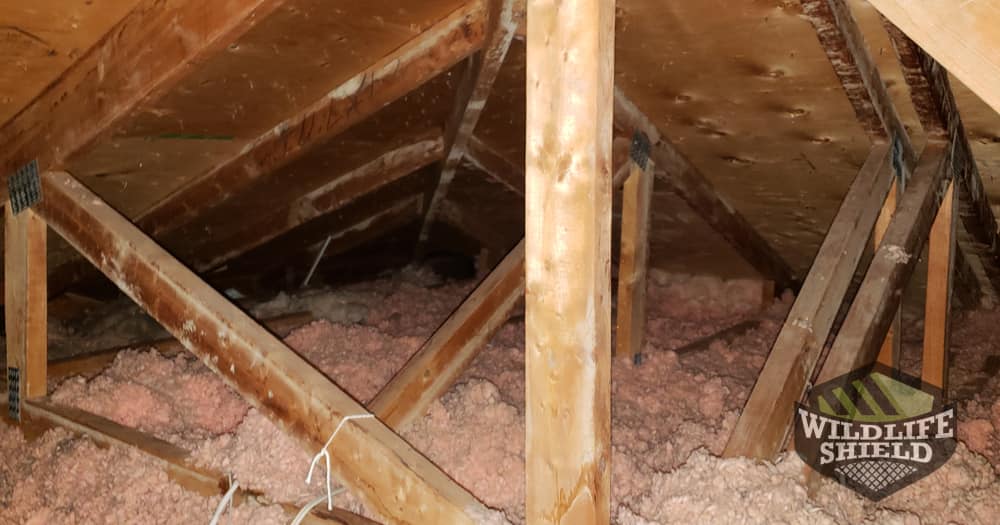
The customer had gone ahead and patched the entry point themselves and unknowingly trapped the raccoon inside the attic. This can be extremely problematic because the animal may start to chew through other parts of the attic in an attempt to leave the space. If unsuccessful, it will eventually perish due to hunger and dehydration. The decaying carcass will emit a strong smell that can permeate through the entire house which will require great efforts to deodorize and disinfect.
Exclusion
Our technician removed the customer’s patchwork and installed a one-way door at the point of entry to allow the raccoon to vacate the attic and not be able to go back in. This plexiglass door is secured with galvanized steel mesh and will stay in place for a few days to allow enough time for the creatures to leave. Once we verify with the homeowner that the activity is no longer taking place in the attic, we will return to remove the one-way door and patch the hole.
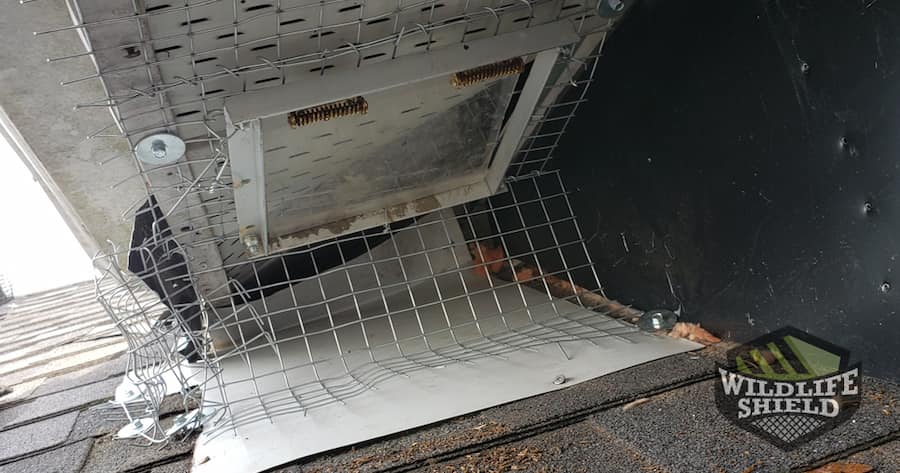
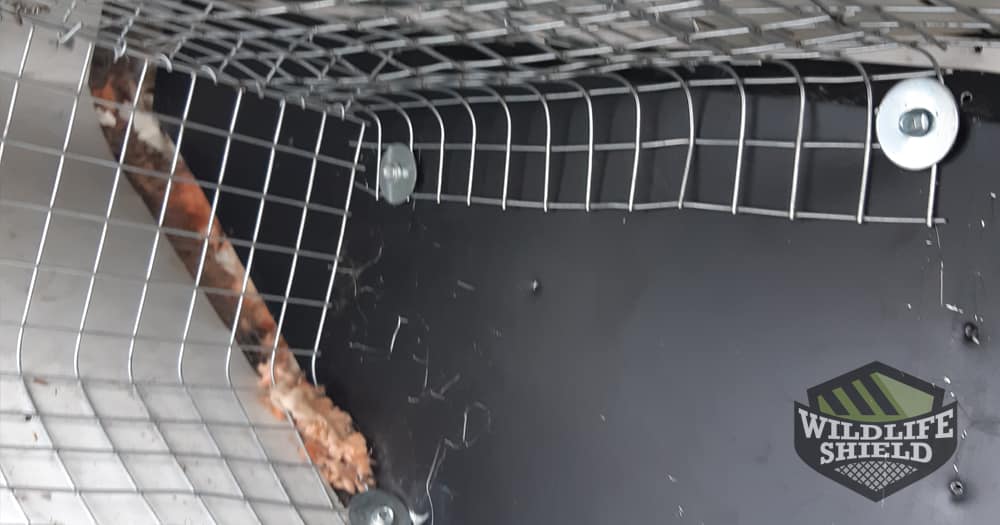
We suggested to our customer that all roof vents and a plumbing vent be secured with our PVC-coated steel mesh covers to prevent any other wildlife from entering the roof structure. These vents will often attract wildlife as they emit heat, especially in the winter months. They are often made of plastic or thin metal and are no match to a determined animal that wants to make the attic their new home.
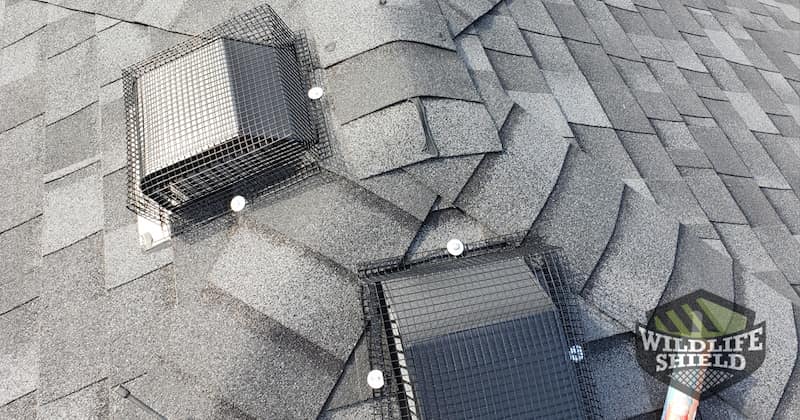
The customer agreed and we proceeded to cover all roof vents. All our exclusion work is guaranteed for 2 years. If any of the covers are damaged or removed by wildlife, we will return to replace or repair them. This will give our customer peace of mind for the next couple of years.
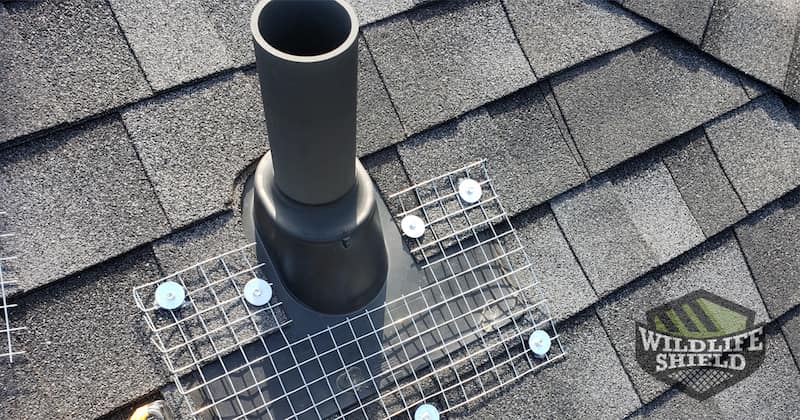
Conclusion
When wildlife chooses to become a tenant in an attic it is always a good choice to call a professional wildlife removal company to deal with the issue. Attempting to patch any and all possible entryways yourself can lead to further problems if the animals have not vacated the space. This is especially important during baby season which goes from mid-March to as late as June. Mothers often look for attics to create and cozy den and give birth to their kits. It may take weeks for the little guys to venture out and go on with their lives.
Our technicians are trained to identify the extent of wildlife activity and act based on their knowledge. Our work is guaranteed for 2 years so you can be sure the animals will not penetrate through any of our installations during that time.
